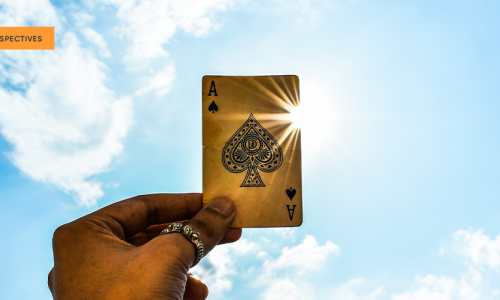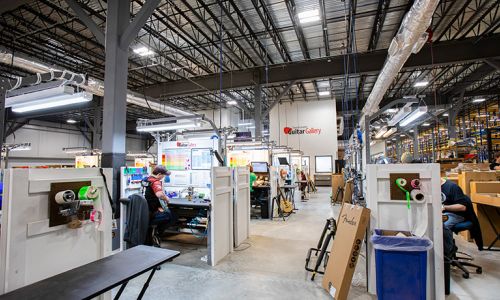My millennial perspective on defining millennials

For an age group that’s constantly redefining itself, Pew Research has put in its (highly regarded) two-cents on what exactly ‘defines’ a millennial. Earlier this month, the research firm stated that those born between 1981 to 1996 will be labeled as millennials for future work, while temporarily dubbing anyone born past 1997 as “post millennials.”
As a millennial myself, born two years before the new cut off, it’s interesting to write about my generation as something that can be defined by stats or trends, but I can also appreciate it as a necessary step to best understanding and serving people. Businesses are increasingly finding the term “millennial” as a buzzword (as no doubt generations in the past and future will be used likewise) and puzzle over how to tap into a market that is fast paced, highly connected, and hungry.
Considering the firm’s step to establish an age guideline for one of the U.S.’s largest age groups, let’s take a deeper look at one perspective on the millennial customer experience.
It’s more than a birthdate
When I think about defining my generation’s outlook, I like to look back at the Relate by Zendesk presentation, “How the Best Brands Build Trust and Credibility with Millennials,” by Matt Harrington, founder of Harrington Brands and a speaker on growing millennial leadership. He took an approach that tried to create a sense of common ground between generations, but without the pretention that these characteristics are their sole defining traits.
Instead he described generations as being defined not by the time you’re born in but the experiences that shape you. Each generation has cultural and global events that have shaped their mindset and culture. As Harrington pointed out, the Baby Boomers had events like Vietnam and the Civil Rights Movements that made them loyal to organizations and focused on consensus building. While Millennials had 9/11, the recession, and the tech boom that made them inherently social, tech savvy, and difficulties dealing with self-criticism.
To help better understand and thrive with a vibrant young marketplace Harrington outlined three themes businesses need to understand to captivate millennials:
Rigorous demand for excellence: Look at the brand titans that make ‘excellence’ a part of their DNA. Apple, for example, pays an extreme amount of attention producing superior products and its pursuit of excellence make it a top brand for millennials. They are attractive because they think differently, and millennials notice.
Or look at the former CEO of SAS, Jan Carlzon, who Harrington described as a man who refused to simply walk to shoddy products without saying something. Businesses need to ask themselves if they’re approachable to customers and are excellent at listening and looking for moments of customer truth.
Repetitive performance in competency and character: This is about building authentic trust. When working with millennials, businesses need to think about character and competency, meaning that you are integral, and your competency is based off capabilities. Here we look at Starbucks that employs “technology acuteness,” social and community standards (ethical products), and engagement standards with customers. Think about if your company focuses on good intentions and mutual benefits.
Narrative belonging: Finally, this is building a story that shows how each customer interaction creates a sense of belonging to the brand. This means being reliable, accountable, nonjudgmental, and generous. NPR did this well by being trustful, building a hyper local audience, and creating a healthy collective mindset with fundraising. Ask if your story belongs to the customers.
What stood out about Harrington’s work was the importance of brands filling out a role in a young customers’ lives with a tactical social approach. As a customer I want to seek meaning in my transactions, whether online or in person. For example, if an associate is blatantly trying to shove a promotion that seems right from the training manual, it’s very unappealing. Instead, products that seek to engage and listen—such as food chains that are aware of the impact they have on the outside world, or even put in the effort to engage their customers—draw me in. In a study by Horizon Media's Finger on the Pulse, 81 percent of millennials want brands to be a part of a better, more ethical, corporate citizenship.
Tattoos and Myspace
So how does this shape perceptions of the millennial generation? In 2007 Pew Research conducted a survey on “Generation Next,” which then incorporated those born from 1981 to 1988. They where labeled as the “Look at Me” generation, with four in 10 using into social media sites such as Facebook and Myspace to create profiles that reflected their online personality. And paling to today’s numbers, only half said they had sent a text or instant message to keep in contact with friends in a day. The times have certainly changed. Overall, this was a generation that was increasingly adopting technology, social reforms, dyeing their hair, and getting tattoos.
Keep in mind this survey was right before the cusp of the iPhone revolution. If the Generation Nexter customer base was already being analyzed as highly personalized and always connected, it had another thing coming as social media became more interconnected and portable.
According to research by USC Dornsife, 85 percent of millennials will buy a service or product if it’s personalized today. In an age where Snapchat, Instagram, and social media apps allow you to apply your own brand to the daily interactions you as a customer have with your products, it’s up to the brand to create an engaging process that makes them feel a part of your company.
A millennial future
In only a matter of years millennials will be the largest age group in the U.S. According to Pew Research, by 2019 the millennial generation will surpass Baby Boomers in terms of population.
But as we’ve seen, defining or recognizing any generation isn’t a number and stats game. Businesses that have recognized millennials desire for human and genuine customers experiences have been rewarded with customers that are innovate and active members in their brand.
And that’s the point. As the millennial generation continues to grow with creative and social platforms such as YouTube, Snapchat, and Waze, let them choose the experiences they want to have. Businesses need to compete to be relatable, fresh, and mindful of the world around them. No one is a number or can be placed in a box. Understand macro themes while interacting with each customer, millennial or not, as an individual.





